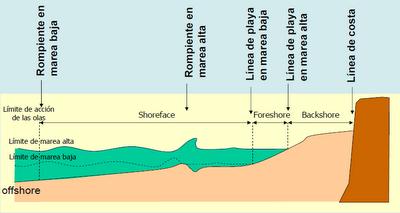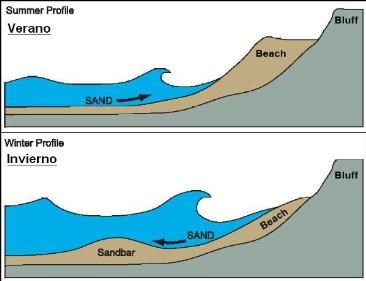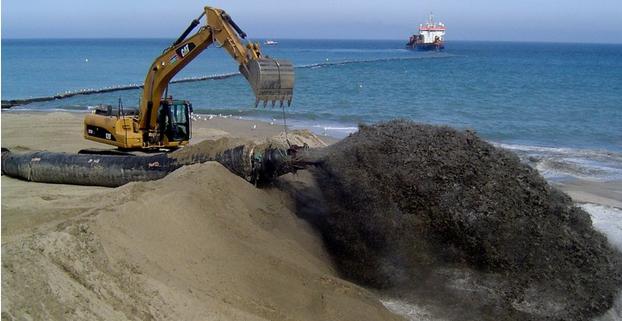Son tantas las alegrias jugando a este juego que iré completando los tipos distintos de caché en cada aniversario 1000
SIMPLE-Aniversari 1000 - Jaumet celebra mil troballes -GC2P8B7
MISTERY-Aniversari 2000 – Klaus -GC34XRD
MULTIPLE-Aniversari 3000 - Ordre i Caos (Reloaded) -GC399G0
EARTH-Aniversari 4000 - Sand & Water -GC40V05
LETTERBOX-Aniversari 5000 - Japanese Letter-GC4TRD7
EVENT-Aniversari 6000 - Un, Dos, Tres... A buscar otra vez -GC5GVNB
WHERIGO-Aniversari 7000-Ara i abans de Badalona -GC5VA4Q
CITO-Aniversari 8000 - CITO: "¿Qué Apostamos?" -GC68Y1W
WEBCAM-Aniversari 9000 - La Webcam d'Ocata (Masnou) - GC6KPCD
AUDIOCACHE-Aniv. 10.000 (O casi) -Agente Especial- GC70DFG
English Translation Below
Earth Cache - Sand & Water -
Somos unos privilegiados los que vivimos en Barcelona (o cercanías) por tener a tan poca distancia, maravillas naturales como las montañas o las maravillosas playas de las que disfrutamos en verano. Este Earth cache va dedicado a las playas que conforman el litoral de la ciudad de Barcelona, centralizandolo en la mítica playa de La Barceloneta.
¿Os habéis fijado que rapidamente se hunde la gente al entrar en una playa del litoral Barcelonés? En otras playas como las de la costa de Valencia, o las del país vasco, las playas son planas y hay que andar muchos metros para que el agua cubra la totalidad del cuerpo. ¿Porque no pasa eso en Barcelona?
La razón es que durante el invierno hay un movimiento brutal de arena de playa de manera natural que suele acabar con gran parte del área de playa. Nuestro planeta está preparado para regenerar de manera natural las playas que se erosionan en invierno, pero por culpa del hombre a veces esto no es así. Pero empecemos por el principio.
¿Que ocurre en las playas de Barcelona? ¿Porque se erosionan y regeneran durante el año?
La arena de la playa es constantemente removida por la acción del oleaje que van empujando y absorviendo la arena de la playa en movimientos constantes de vaivén. Cuando en invierno aparecen grandes temporales, estos suelen conllevar un cambio drástico en el aspecto de la playa que conocemos en verano.
Es bueno diferenciar primero las diferentes partes de la playa. En este caso, vamos a ver en cuatro partes, la "trasplaya", la playa, zona rompiente y alta mar. (backshore, foreshore,shoreface y offshore respectivamente).
La 'trasplaya' (Backshore) comienza en las dunas de arena con vegetación al nivel de la marea alta no suele darse en muchas playas de Barcelona pero sí en algunas algo más al norte como en Vilassar de mar (GC2P8R8). La 'trasplaya' se compone de un terraplén y la cresta de ese terraplén. La cresta del terraplen representaría el pico elevado donde termina el terraplén. El terraplén propiamente dicho es el arenal relativamente plano donde ponemos nuestras toallas de playa y su ancho suele cambiar cada temporada siendo más ancho en verano que en invierno. Esta variación de anchura se debe al movimiento de vaivén y genera tres nuevas zonas: La playa (Foreshore), zona rompiente y lo que llamamos alta mar (OffShore)

La playa (Foreshore) comienza en la línea de la marea alta y se extiende hasta la línea de marea baja. Esta sección suele sere inclinarse hacia abajo de manera uniforme. En caso de mareas esta sección de playa està periódicamente bajo el nivel del mar o por encima. Barcelona al ser bañada por el mediterráneo no tiene apenas mareas puesto que es un mar muy pequeño y las mareas son casi inapreciables.
Más allá de la playa encontramos lo que llamamos zona rompiente y comienza desde la línea de marea baja extiendose hacia alta mar. Esta sección aunque está siempre por debajo del nivel del mar, està constantemente afectada por el oleaje. Durante el verano, es una pendiente relativamente uniforme hacia abajo, pero durante el invierno esta pendiente se vuelve abrupta apareciendo una especie de hoyo con montículos de arena que provienen del movimiento de vaiven de la arena bajo el oleaje.
Veamoslo con mayor detalle:
Los cambios estacionales indicados anteriormente son causados por los diferentes niveles de fuerza en el oleaje de verano y de invierno. Las tormentas de invierno suelen generar olas con mucha más fuerza que en verano. Así, las olas de invierno erosionan la arena de la playa y la almacenan en los montículos que mencionamos de la zona rompiente. Estas olas tienen tal fuerza que no sólo recogen arena de la playa sino que también la transportan fuera de la zona de marea. La grandes tormentas además generan un oleaje que puede llegar a erosionar la cresta del terraplén, reduciendo por tanto la anchura de la playa cuya arena queda depositada en los montículos de mar adentro.

Por otro lado, durante el verano, las olas son más suaves pero tienen fuerza suficiente para transportar arena. Sin embargo cuando el agua se retira hacia el océano, no tiene suficiente fuerza para retirar la arena previamente transportada resultando en una ganancia neta de arena. Así empieza una acumulación gradual de arena que devuelve la anchura de la playa en verano.

Como ya hemos comentado, el mar mediterráneo por ser un mar practicamente cerrado y de poca masa de agua tiene mareas casi imperceptibles, lo cual causa que en ocasiones de fuertes temporales, las playas de descompongan de tal manera que apenas llegan a la gran magnitud de lo que solían ser en verano. La regeneración de playas que se daría de manera natural por el propio sistema desaparece si el hombre interviene, como es el caso del litoral barcelonés con la construcción de puertos deportivos que impiden el movimiento natural de la arena para la regeneración natural de la playa.
Es por esto que en ocasiones, se han tomado medidas exigentes de regeneración artificial de arena de playa. Cuya práctica no suele ser muy bien apreciada entre los colectivos ecologistas pues atenta contra el equilibrio natural marítimo. Estas medidas constan de extraer arena desde alta mar y desde allí tomar esta arena que se deposita en la playa a regenerar. Otras medidas que se pueden tomar es la construcción de espigones que ayuden a reducir la erosión de dichas playas cuando se acercan los temidos temporales en invierno.

Referencias:
http://coastalchange.ucsd.edu/st3_basics/beaches.html ... y ... http://marbcn.blogspot.com.es/
People who live in Barcelona (or surroundings) are privileged. We have natural wonders quite close such as mountains and beautiful beaches. This Earth cache is going to tell you more about those beaches in the Barcelona coast, centralized in the mithical Barceloneta beach.
Have you realised how deep is a Barcelona beach when you enter to take a fun bath? In other beaches such as those in the Valencian Coast or in the Basque Country, beaches use to be flat and you need to walk several meters to get completely sunken. Why is this different in Barcelona?
The reason is because in winter, there's a big sand movement that erodes the beach. In summer as a part of a natural mechanism, the lost sand is back again to the beach to get its original size. Unfortunately sometines this doesn't occur because of the man. But let's begin from the beginning..
What happens in the Barcelona beaches? Why do they erode and regenerate themselves during the year?
Sand on the beach is constantly being moved around. As you can see, each wave that comes in pushes around the sand on the beach, turning the ocean water at the shore brown. The difference in energy between summer and winter waves drastically changes the look of the beach.
To examine this seasonal change, it is good to have names for the different parts of the beach. In this case, we'll look at four parts, the backshore, the foreshore, the faceshore and the offshore.

The backshore begins at the vegetated sand dunes to the high tide level and is comprised of the berm and berm crest. The berm is the relatively flat sandy area where everyone loves to put their beach towels. At the berm crest, beach slopes more steeply to the high tide level. The width of the berm changes seasonally. During the summer it is wider than during the winter. This change in width results in the moving shoreward or seaward of the next two zones.
The foreshore begins at the high tide line and stretches to the low tide line. This section of beach in usually slopes downward at a uniform level. Because of the tides, this section of beach is periodically below sea level or above sea level.
Beyond the foreshore is the offshore beginning begins at the low tide line and extending off shore. This section of the beach is always below sea level but constantly affected by the waves. The offshore profile changes seasonally. During the summer, it is a relatively uniform slope down. During the winter, a trough (low point) forms with mounds of sand (bars) eroded from the berm shoreward and seaward of the trough.
The seasonal changes noted above are caused by the different energy levels of summer and winter waves. Winter storms generate waves with more energy than summer waves.
The winter waves erode sand off the beach and store it in offshore bars. The winter waves have enough energy to not only pick up sand as they come into shore but also transport it off of the foreshore. The largest storm generated waves also erode the face of the berm crest, reducing the width of the berm. The sand is then deposited in sandbars off-shore.

During summer, the waves are milder. These waves have enough energy to transport sand as they come into shore. As the water flows back to the ocean, there is not enough energy to transport as much sand as the wave brought onto the forshore back off shore, resulting in a net gain of sand. This results in the gradual build up of the berm crest and the berm widens for the summer.

However, the mediterranean sea is an almost-closed sea with few water mass compared with other oceans. That's why tides are almost inexistent and therefore a vey few difference between low and high tide. Furthermore, in winter there are sometines big storms that almost destroy the beaches completely. Although the regeneration of the beach is a natural mechanism, the truth is because of the man this don't always occur. The reason is because man has built sport harvours along the coast. This avoid the natural flow of the sand and the water and therefore the natural regeneration of the beach.
Because of this, sometines extreme measures had been taken to regenerate the beach with human resources. This is not well accepted for several ecological groups because it attempts against the natural marine equilibrium. This actions can be in one hand, to extract sand from offshore and regenerate the beach with this, or in the other hand the construction of breakwaters to reduce the erosion of those beaches in winter.

References:
http://coastalchange.ucsd.edu/st3_basics/beaches.html ... and ... http://marbcn.blogspot.com.es/
Para conseguir este Earth Cache debéis enviar un mail a jmasachs <arroba> hotmail.com con las respuestas y fotos Y ESPERAR confirmación ANTES de logar. Sino el log será borrado.
To log this Earth Cache submit your answers by mail to jmasachs <at> hotmail.com and once you have received confirmation, do the log. Otherwise log will be deleted.
1 - Toma una foto de TI en la arena de la Barceloneta, debes mostrar tu GPS o bien dejar correr arena entre tus dedos. Intenta que se reconozca el fondo. Aunque esta tarea no és obligatoria será muy agradecida por el propietario
1 - Take a picture of YOU with your GPS or letting flow some sand through your fingers. Try to get somewhere easy to recognise as background. Although this is not a mandatory task the owner will appreciate
2 - En las coordenadas iniciales encontrareis un indicador de rutas de bicicleta. ¿Podéis decir cuanto suman en km todas las rutas indicadas de los carteles de color verde?
2 - On the above coordinate you'll find a pole with bike routes. Could you SUM the km of the routes in the green signs?
3 - ¿En la playa de la Barceloneta podrias decir cuanto miden en metros aproximadamente las zonas de BackShore y Foreshore? ¿Como lo has medido?
3 - Could tell us how long are, in meters, the BackShore and Foreshore areas in this beach? How do you measure each one?
4 - ¿Porque en el litoral Barcelonés a veces no se consigue regenerar la arena de la playa de manera natural?
4 - What is the cause why the Barcelona coast sometines can't regenerate sand in a natural way as it should be.